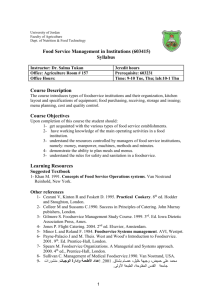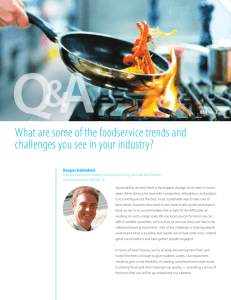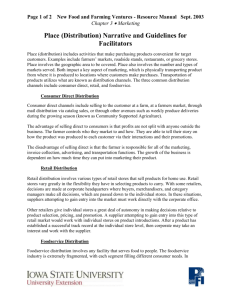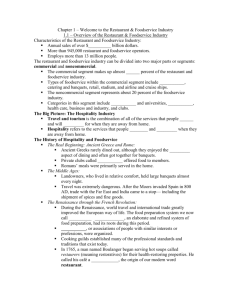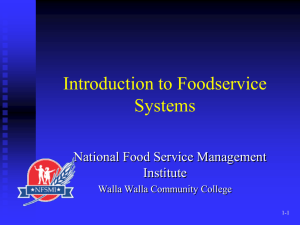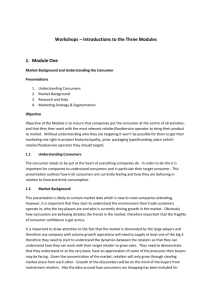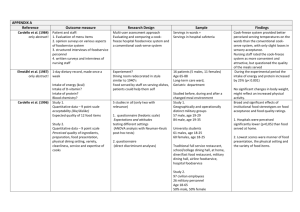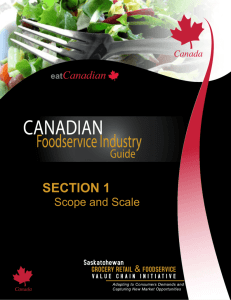History of Foodservice
advertisement
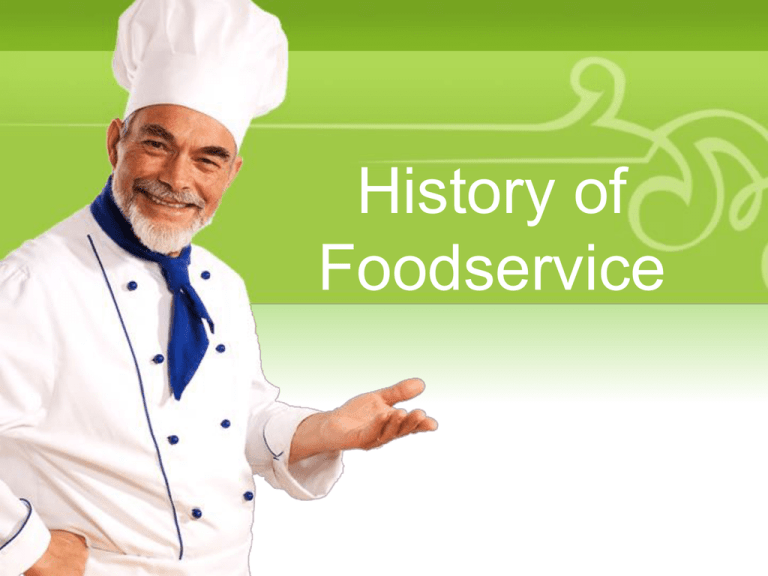
History of Foodservice • The history of foodservice is closely associated with travel. • Throughout history, merchants have traveled extensively to trade with other nations or tribes. • There were also the religious pilgrimages to places of worship. • Invariably, in the different places of destination, food and lodging have been provided to the travelers. • In the Middle Ages, the beginnings of foodservice was evident in the dining rooms of posting houses of the Romans, as well as the inns and taverns of the English people. • The Canterbury Inn had a kitchen measuring 45 feet in diameter , which provides food not only for the monks but also for the pilgrims who came to the abbey to worship. • In the Royal Households of England where numerous guests (150 to 00) were received daily, foodservice became a necessity. • Thus, a systematic recording of its expenses was made and compiled in the Northumberland Household Book which was considered the first known record book of scientific food cost accounting. • Also in England during the industrial revolution, a certain Robert Owen provided meals at nominal prices in an effort to improve the working conditions of the workers in his mill. Owen’s feeding program was so successful that it spread throughout the civilized world. Hence, he was been known as the father of modern industrial catering. • An English nurse, Florence Nightingale, pioneered in hospital foodservice during the Crimean War. She was so efficient in organizing and managing the meals for the patients that she has been called the first hospital dietitian in the modern sense. A noted chef named Alexis Soyer helped her in the establishment of a hospitaldiet kitchen. • The formal school feeding program was started in England by an Englishman named Victor Hugo. The American school feeding programs were patterned after Hugo’s program. • As opportunities for travel increased, so did the commercial foodservice grow. In the 16th century, coffeehouses were established in the United States of America. In Paris, France, however, it was only sometime in 1765 that the first restaurant was opened by a Frenchman named Boulanger. • Then, with the advent of the 20th century, commercial foodservice has become highly favored over the other types of foodservice systems. The Beginnings of Foodservice in the Philippines • In the Philippines, foodservice existed as early as the time of the barangay system. The datu had to feed his people including the slaves or alipin. Hence, it required the service of food in great quantities. • The Chinese were the forerunners of the developmental rudiments of the commercial type of foodservice. The earliest recorded date of Chinese-Philippine trade is 982 A.D. Traders with valuable merchandise came to Luzon from Fookien, Southern China. Though the Chinese peddlers, the Filipinos came to know of varieties in dining pleasures. • During the Spanish period, Chinese food became popular that they were no longer peddled by ambulant vendors but were served under more permanent structures. A letter of a civil servant to King Philip II of Spain reported that the Chinese Community, “the Parian” had many eating houses where the Sangley’s (Chinese) and the natives partook of their meals. • The natives set up eating places usually at the back of public markets. Here, portions of kari-kari (an elaborate stew) could be readily bought at cheap prices. Thus, such eating places came to be known as karihan. No explanation, however, could be obtained from history books why the Spaniards later called it as carinderia. • On the other hand, the Chinese operated eateries which came to be known as panciterias since they usually serve pancit (noodles). • The Americans modified the foodservice system when they introduced the concept of cafeteria. It started with the public school feeding program in 1906when attempts were made to remedy the poor nutrition of children. The American teachers put up cafeterias to demonstrate the value of proper diet to the students. The cafeteria was a laboratory of the home economics courses which also served meals to both students and the faculty. • The cafeteria concept was not limited to the schools. Other types of foodservice such as the commercial fast food centers, in-plant feedings, and dining rooms in healthcare institutions picked up the concept of self-service. • From then on, many concepts and practices have been introduced by other countries which have contributed to the development of foodservice in the Philippines. Changes have taken place with increasing speed due to many factors like modern technology; new legislations; and urbanization. • It is expected that with the onset of globalization and the effect of modern information technology in the Philippine foodservice industry will become more diversified and definitely grow in magnitude. End of Presentation
